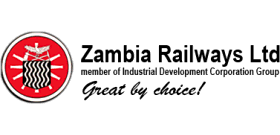 Capital projects being pursued by Zambia Railways
Capital projects being pursued by Zambia Railways
Loveness Zimba, Senior Corporate Planning Officer, Zambia Railways Limited (ZRL), spoke at the recently held African Union Commission (AUC)’s Department of Infrastructure and Energy (IED) Continental Workshop on the Implementation of the Africa Integrated Railways Network (AIRN), which took place from 7th to 10th May 2024 in Dar es Salaam, Tanzania.
Zambia is a natural hub, currently operating two railways: Zambia Railways Limited (ZRL) and the Tanzania-Zambia Railway Authority (TAZARA). Ms Zimba emphasised the strategic role of Zambia Railways in the nation. The company services the mining, manufacturing, and production sectors. Zambia’s strategic position in the Southern and Central regions makes it a vital hub, connected to almost all the countries in Southern Africa. It is connected to nearly all the ports in the Southern region and serves as a destination, export, and transit point for major commodities in the region. The design capacity for the railways in Zambia is to move about 6 million tons annually.
However, due to inadequate and poor infrastructure, the company has not been able to move the traffic volumes it was initially designed to handle. To provide some historical context: before the concession in 2003, ZRL was able to handle about 1.7 million tons. During the concession period, the traffic volume reduced to about 500,000 tons. Post-concession, traffic volumes started regaining momentum, and the company moved about 1 million tons in 2020, during the COVID-19 pandemic. This was the highest volume moved post-concession. The biggest challenge has been the lack of adequate private investment in track, rolling stock, and infrastructure.
Regarding opportunities and greenfield projects being pursued by ZRL and the government, these projects are being handled in two parts.
The first scope involves the mobilisation of the existing Zambia Railways, Cape Gauge Railway, and the supply of rolling stock to handle the desired traffic volumes. The second scope involves the development of critical greenfield projects. Currently, several greenfield projects are being pursued. The first is the Kafue – Lion’s Den via Chirundu, which will reduce the distance between the Copperbelt Province in Zambia to Beira by about 1,000 km. A feasibility study and engineering designs have been completed. The government is pursuing this joint project with Zimbabwe and it will be executed via PPP.
The second project is the development of a rail line from Livingstone via Kazungula to Sesheke. It will shorten the distance to the port of Durban by about 400 km and facilitate railway connectivity to Walvis Bay. A pre-feasibility study is currently underway and this project is a joint effort with Botswana.
Another capital project is the 600km, Chingola to Jimbe rail line via Solwezi, which will connect Zambia to the Lobito Corridor in Angola. An MOU was signed last year (2023) by the governments of Angola, Zambia, the USA, the European Union, and the African Finance Corporation. Under this project about USD$1 billion has been mobilised for this project. The pre-feasibility study is expected to be completed by 2026, with construction targeted for completion in two years. The final project is the 192km, Nseluka-Mpulungu via Mbala rail line. The procurement process has commenced, and an advert was issued in Q1 of this year for the expression of interest to construct the project via PPP. This project will link Zambia to the Great Lakes.
Currently, Zambia is connected to five existing corridors: the North-South Corridor (from DRC to South Africa, through the Port of Durban), the Dar es Salaam Corridor (from DRC to Tanzania), the Nacala Corridor (from Zambia to Mozambique, through Nacala Port), the Beira Corridor (from Zambia to Mozambique, through Beira Port), and the Plum Tree Corridor (from Zambia to South Africa, through Durban Port via Botswana).
